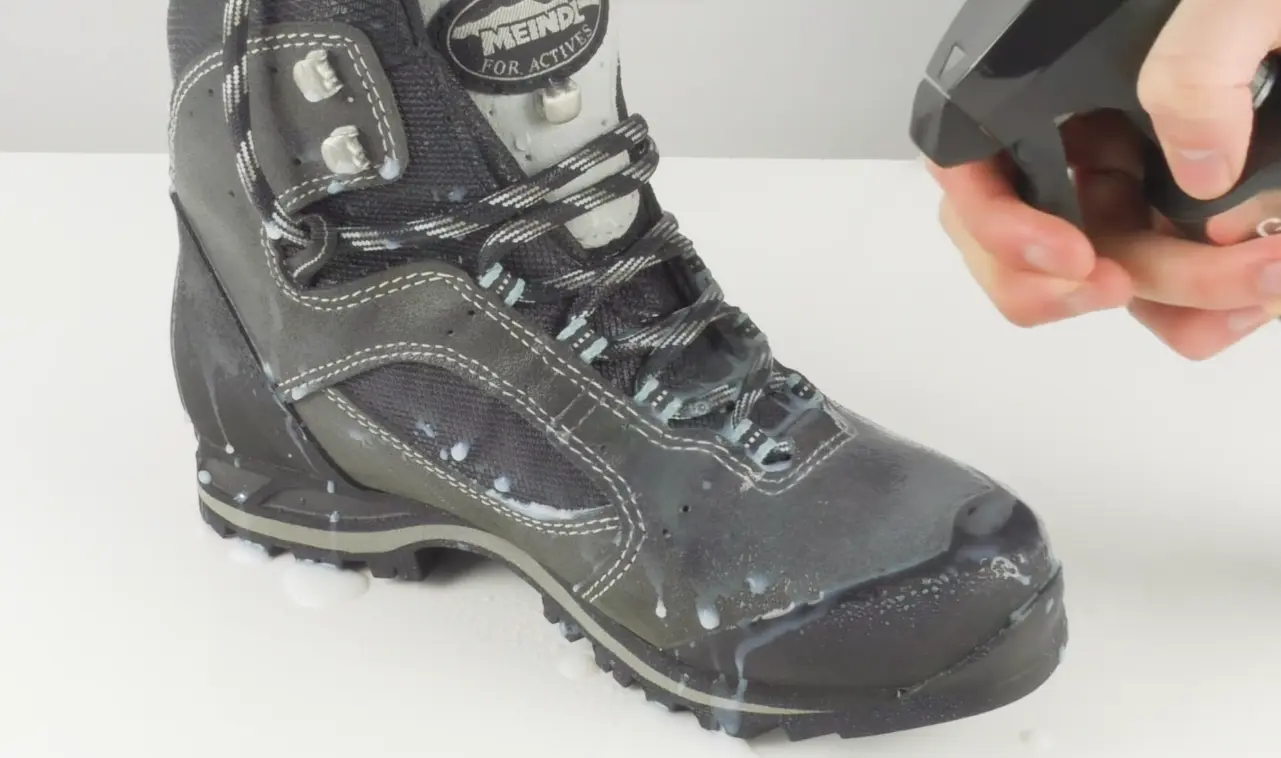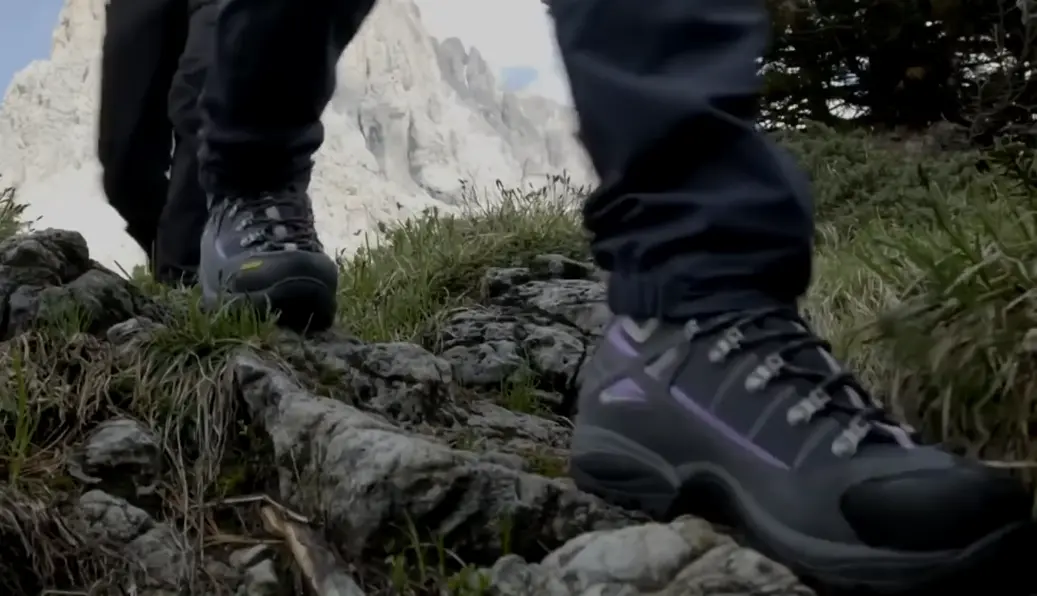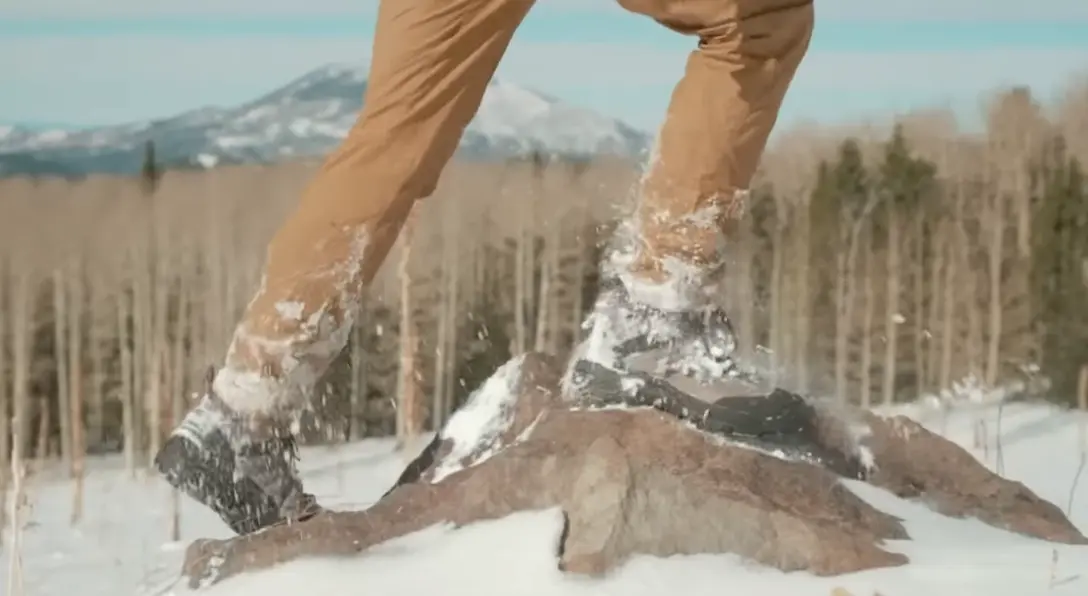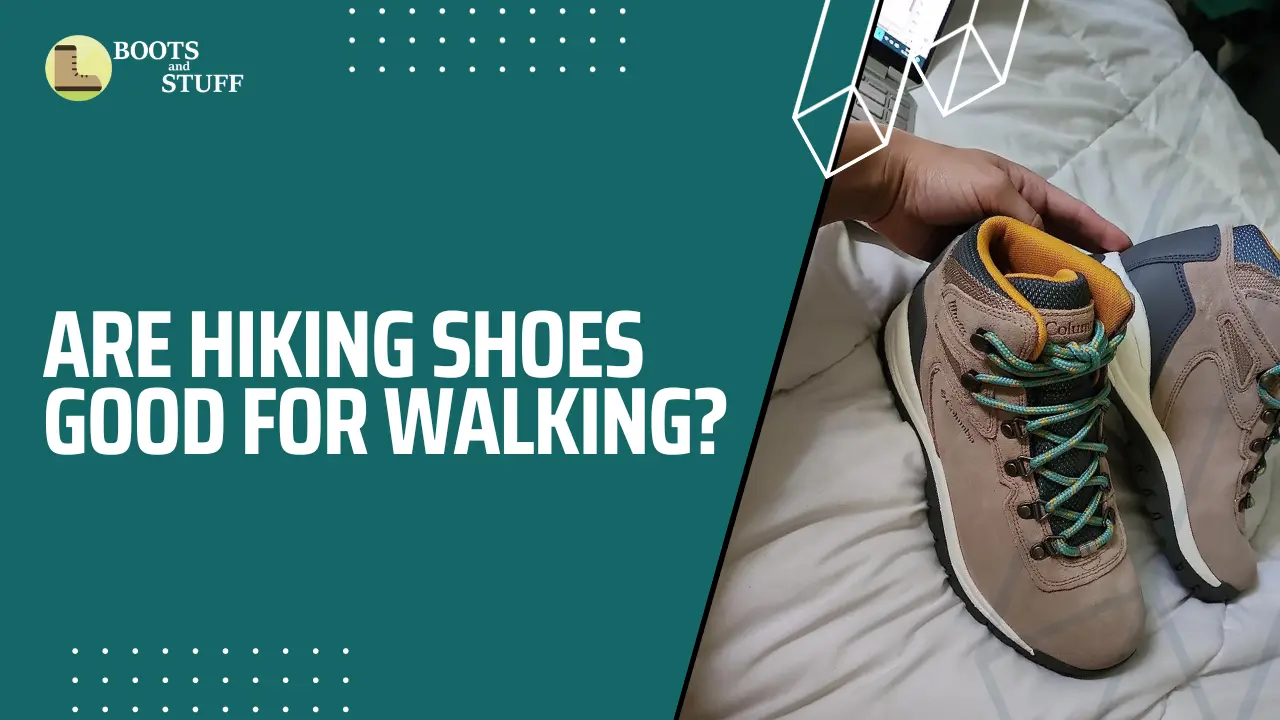Hiking boots and snow boots are not actually the same thing. Both are different shoes, and both have distinct features.
Snow boots are typically manufactured for walking on snow in the winter, but hiking boots are made only for hiking throughout the year.
Those who want to go hiking and, at the same time, want to go for an adventure on the snow in winter, look for all the features of snow boots in their pair of hiking shoes. For this reason, I often come across these most frequently asked questions. The questions go something like this:
- Can I wear regular hiking boots in winter weather?
- Are hiking boots safe to wear on ice?
- What’s the difference between snow boots and hiking boots?
- Do I need special hiking boots for winter?
- Are hiking boots warm enough for winter?
In today’s blog, I will try to answer all these questions. So I’ll discuss exactly what kind of hiking boots you need for walking on the snow, whether you should buy snow boots separately, and the important features and differences between hiking boots and snow boots.
So it is essential that you read this blog before purchasing new hiking boots other than snow boots.
Contents
- Are Hiking Boots Good for Snow?
- 6 Important Requirements That Make Your Hiking Boots Perfect For Walking On Snow
- 1. Your Hiking Boots Should Be Waterproof
- 2. Your Winter Hiking Boots Should Have Proper Traction
- 3. Look For Insulated Hiking Shoes
- 4. You Can Use Regular Hiking Boots That Have Good Breathability
- 5. Choose Hiking Boots That Have Good Ankle Support
- 6. Weight is Important for Hiking Shoes to Walk on Snow
- Snow Boots vs. Hiking Boots: A Comparison of 11 Common Features
- Frequently Asked Questions
- Wrap Up
Are Hiking Boots Good for Snow?

Hiking boots are designed in such a way that they are good for snow. Anyone can use their regular hiking boots to walk over snow, more specifically in light snow. But there are six main features that should be included in your favorite pair of hiking shoes, and the three features are:
- Waterproof Facility
- Proper Traction
- Better Insulation
- Breathability
- Good Ankle Support
- Weight
6 Important Requirements That Make Your Hiking Boots Perfect For Walking On Snow
You’d like to go on a winter hike with your hiking boots, don’t you? Then you must be especially conscious of one thing: the depth of the snow. You can walk on thin snow in your regular hiking boots. However, if the snow depth is greater, you will need to get acceptable winter hiking footwear. If it’s snowing and the snow is getting thicker, snow boots are your last option.
Do you want to know how deep the light snow can get? The term “light snow” refers to snow with a maximum depth of 2 to 3 inches. When the snow level is greater than 3 inches but less than 6 inches, you will need winter hiking boots built specifically for snow walking. Whenever the snow thickness averages more than 6 inches, your only option is to walk in your snow boots. I’ve summarized the information below in bullet points so you can remember it quickly.
- Wear regular hiking boots if the snow is between 2 and 3 inches deep.
- Use special Hiking Boots to walk on snow that is more than 3 inches thick but less than 6 inches thick.
- When there is more than 7 inches of snow, snow boots will be required.
There are six essential requirements you should always keep in mind when choosing your hiking boots. And I have given a list of those six requirements or features at the beginning of this blog. Those features are must-haves for hiking on snow in the winter. If they exist in your pair of hiking footwear, you can walk on snow without any problems. Let’s know a little more about those must-have features.
1. Your Hiking Boots Should Be Waterproof
Most of the brands that exist today try to include waterproof facilities when manufacturing hiking boots. You can find out whether the hiking boots you are using have this waterproofing facility or not by searching online with your shoe model and brand name.

Getting your feet wet during a winter hike or during monsoons can be quite an annoying experience. If you want to hike in comfort, then your hiking boots must have waterproof features for walking on snow.
Snow boots have this feature only to keep your feet dry on snow during the winter. The upper part of a snow boot is usually quite long and covers you from above your ankle to below your knee. As a result, snow, water, or ice can never get inside the shoe.
But hiking boots have little of this benefit. But if you want to purchase hiking boots for winter wear, you can buy mid-cut or high-cut shoes. High-cut or mid-cut hiking boots will protect your feet from water and snow in the winter, so try to purchase boots that have these features.
Hiking boot manufacturers generally use Gore-Tex to manufacture their shoes, and this Gore-Tex always keeps moisture out of your feet. As hiking shoes don’t come with high calves like snow boots and don’t contain tight cuffs, you may need to wear gaiters with your hiking footwear, and you can buy them online for extra protection. I’ll discuss that in the other part later.
Waterproof Your Hiking Boots With Waterproof Spray
If your favorite hiking shoes are not waterproof, you need to waterproof them. There are many waterproof products available on the market for waterproofing hiking footwear. For example, waterproof sprays, waxes, and creams

The spray actually works very well for waterproofing, and that’s why you can use it. Another reason to use a spray is that it is easier to use. As a waterproofer, you can use KIWI’s Tough Silicone Waterproof Spray. Nikwax Waterproofing (Fabric and Leather Proof) works very well as a waterproofer. I have personally tried it. Works much better than other waterproofers and costs less. You can try it if you want.
When using waterproofing sprays, try to spray from 8 to 10 inches above the shoe. It works well. It is best not to use sprays on the inside of shoes because the chemicals are not good for your skin. If you want to know the proper process of waterproofing your hiking boots, you can read our article, how to waterproof hiking boots, as a guide.
You Can Use Hiking Gaiters
If you plan to walk in deep snow or more extreme conditions, you can use gaiters to keep snow out of your shoes.

If you do not know what a gaiter really is, it is a type of protective garment worn over the lower leg and ankle. This special garment is designed to keep debris, water, snow, and mud from entering your shoes.
In various harsh environments, hikers, backpackers, mountaineers, and outdoor enthusiasts frequently use gaiters made of waterproof materials like nylon or Gore-Tex.
You can find mainly three types of gaiters on the market, and they are:
- Hiking Gaiters
- Trail Running Gaiters, and
- Mountaineering Gaiters
I found RAB’s manufactured hiking gaiters to be the best gaiters for hikers and mountaineers. These Muztag GTX Waterproof gaiters are made of Gore-Tex, which is why you will get a high-waterproofing facility with high breathability features. The price of this gaiter is only $85.
2. Your Winter Hiking Boots Should Have Proper Traction

Snow boots have the best traction facilities to get the best grip on snow. This is why you can feel free to rely on snow boots for walking on snow. But if you have decided that you will use your hiking boots for walking in the snow, be sure to check their traction support before buying the boots.
Winter hiking boots are usually made with sticky rubber soles that will give you a great grip while walking on snow and greatly reduce the chances of you slipping on your hike. If your shoes don’t have very good traction support, you will need to use microspikes to get enough traction. But hopefully, any hiking boot is built with the features needed to get good traction in any weather.
You can also use trekking poles to increase your traction and get a very good balance on the snow. For this, you can use cheap aluminum trekking poles, or if you want better quality, you can use trekking poles made of carbon fiber.
3. Look For Insulated Hiking Shoes

Your winter boots must have better insulation. Keep this in mind when buying a new pair of hiking shoes. Hiking boots that are manufactured to be used in all seasons will not work better in a snowy condition. If you try to use these kinds of shoes, your toes may get numb from the extreme cold weather.
The level of insulation in hiking boots varies according to style and brand. If you buy snow boots, you do not have to worry about the warmth because snow boots generally have proper insulation to give your feet comfortable warmth.
You Can Use Two Pairs of Socks To Keep Your Feet Warmer
Here is a tip. You can wear two pairs of socks while hiking. You can purchase a hiking boot that is half a size larger than the actual fit, then you can wear two pairs of socks easily and comfortably. This will keep your feet warmer.
You Can Use Snow Socks

If you don’t want to buy your hiking shoes half a size larger than the actual size, that means if you want to buy shoes with an accurate fit, you can buy socks specially manufactured for skiing.
These socks generally are of very good quality. As these socks are usually made of wool and are almost knee-length, they will provide proper warmth to your feet even in extreme cold conditions.
There are many types of snow socks available in the market, but in my personal experience I found the Darn Tough Captain America Cushion Sock is really good for men. For women, you can purchase Falke KGaA’s SK4 Ski Socks.
4. You Can Use Regular Hiking Boots That Have Good Breathability

While insulation and waterproofing are essential, good breathability is equally important to prevent your feet from becoming too sweaty and damp inside the shoe. The major advantage of using a hiking boot rather than a snow boot is breathability.
Hiking footwear is typically highly breathable, but if you want waterproofing features with breathability, it can be difficult to find the exact boot to match your requirements. So, what will you do? Here is the answer: if you use Gore-Tex fabric hiking boots, you will get these two features in your pair.
Gore-Tex is a highly regarded and widely used waterproof and breathable fabric technology. This technology was developed by Wilbert L. Gore and Robert W. Gore in 1969.
5. Choose Hiking Boots That Have Good Ankle Support

While buying your hiking boots, keep in mind whether they are mid-cut or high-cut. A standard hiking boot may not provide as much ankle support as a snow boot. Hiking shoes with mid-height or high-cut designs can offer better ankle support, especially when walking on uneven or snowy terrain.
That’s why you should try to choose hiking boots that have a sturdy and secure fit around the ankle. Having a high ankle collar on your hiking boots with ankle support gives you another added benefit, and that is that the high ankle collar will never allow snow to get inside your shoes. And because of this protection, you will always stay warm.
6. Weight is Important for Hiking Shoes to Walk on Snow

Your hiking boot needs to be a little heavier to walk properly on snow. Although heavy shoes will slow down your walking speed a bit, there is a little substitute for heavy boots for walking on snow.
If you compare standard hiking boots with snow boots, you will find that snow boots are heavier than hiking boots. Because snow boots have very good insulation. Its insoles are also very thick. Therefore, they become heavier than a pair of hiking shoes, and this weight will help you get a better grip on icy conditions.
Snow Boots vs. Hiking Boots: A Comparison of 11 Common Features
There are some basic differences between a snow boot and a hiking boot. In this table, you will find 11 features and their differences. Let’s take a look.
| Features | Snow Boots | Hiking Boots |
|---|---|---|
| Weight | Snow boots tend to be heavier than hiking boots. | Hiking boots are lighter. |
| Traction | Snow boots are manufactured with good traction. | Hiking boots typically do not have as much traction as snow boots. |
| Waterproof | Snow boots have waterproofing facilities but have fewer breathability features. | Gore-Tex hiking boots have good breathability and waterproofing features. |
| Breathability | Less breathable. | Have better breathability. |
| Insulation | Snow boots have good insulation. | Hiking boots are less insulated than snow boots. |
| Comfort | Snow boots tend to be heavier than hiking boots and are less comfortable. | Hiking boots are lighter, which is why they become more comfortable. |
| Ankle Support | Have better ankle support compared to hiking footwear. | Mid-cut and high-cut boots have good ankle support, but not all shoes have this feature. |
| Versatility | Only usable for snow walking. | You can use hiking shoes in any season. |
| Outsole | Snow boots have a rubber outsole and a compact lug pattern. | Hiking boots sometimes have a rubber outsole, and they have a more aggressive lug pattern. |
| Sealed Cuff | Always have a sealed cuff. | No sealed cuff |
| Flexibility | Snow boots are less flexible. | Hiking boots have more flexibility compared to snow boots. |
| Price | The price varies depending on quality and features. | The price varies depending on quality and features. |
Frequently Asked Questions
1. What’s the difference between snow boots and hiking boots?
Snow boots are manufactured specifically to walk on snow. Snow boots are typically heavier than hiking shoes; they have more ankle support, better traction, and insulation. On the other hand, hiking shoes are made not only for walking on snow but for any weather. They have better breathability than snow boots, are more flexible, and do not have a sealed cuff.
2. Can I wear regular hiking boots in winter weather?
Yes, you can use your regular hiking boots in winter weather. You can also walk on snow that is at most 3 inches deep. Don’t forget to wear ski socks while using your favorite pair of standard hiking shoes.
3. Can you wear trekking boots in the snow?
You can wear trekking boots in the snow if your shoes have proper insulation, better traction, and waterproof features. These three requirements are important. Because traction will give you stability over slippery snow, insulation will keep your feet warm, and waterproof features will keep your feet dry.
4. Are hiking boots safe to wear on ice?
Even the greatest rubber outsole isn’t always slip-proof on ice. Hiking shoes can be combined with traction devices such as microspikes or hiking crampons. If you are able to get this equipment, walking or running on ice with your favorite hiking footwear will not be a problem.
5. Which type of shoe is best for walking on snow?
Look for shoes that have a rubber outsole with a compact lug pattern, a good ankle support system, excellent insulation, and are waterproof. The good news is that snow boots typically have all these features, but if you want to use your hiking shoes, please confirm these criteria before walking on snow.
Wrap Up
Hiking boots are undoubtedly suitable for walking on snow if they match some of the requirements I mentioned earlier. I wrote this blog based on my personal experience and received valuable information from expert hikers, which I have included in this comprehensive piece.
Waterproofing characteristics, proper traction, and improved insulation are three crucial features to seek out in your favorite pair of hiking footwear. Breathability, ankle support, and weight are the other three factors.
If your hiking footwear has all of these properties, it is complete enough to walk on snow. If you don’t want to slip and fall over ice, you can wear crampons or microspikes. They will provide you with extra support.
In a comparison table, I also explained the difference between a hiking boot and a snow boot. That table will help you understand both of these shoes.
If you find this blog beneficial, please share it with your hiking buddies and friends. If you have any suggestions for us, please leave them in the comments section.




